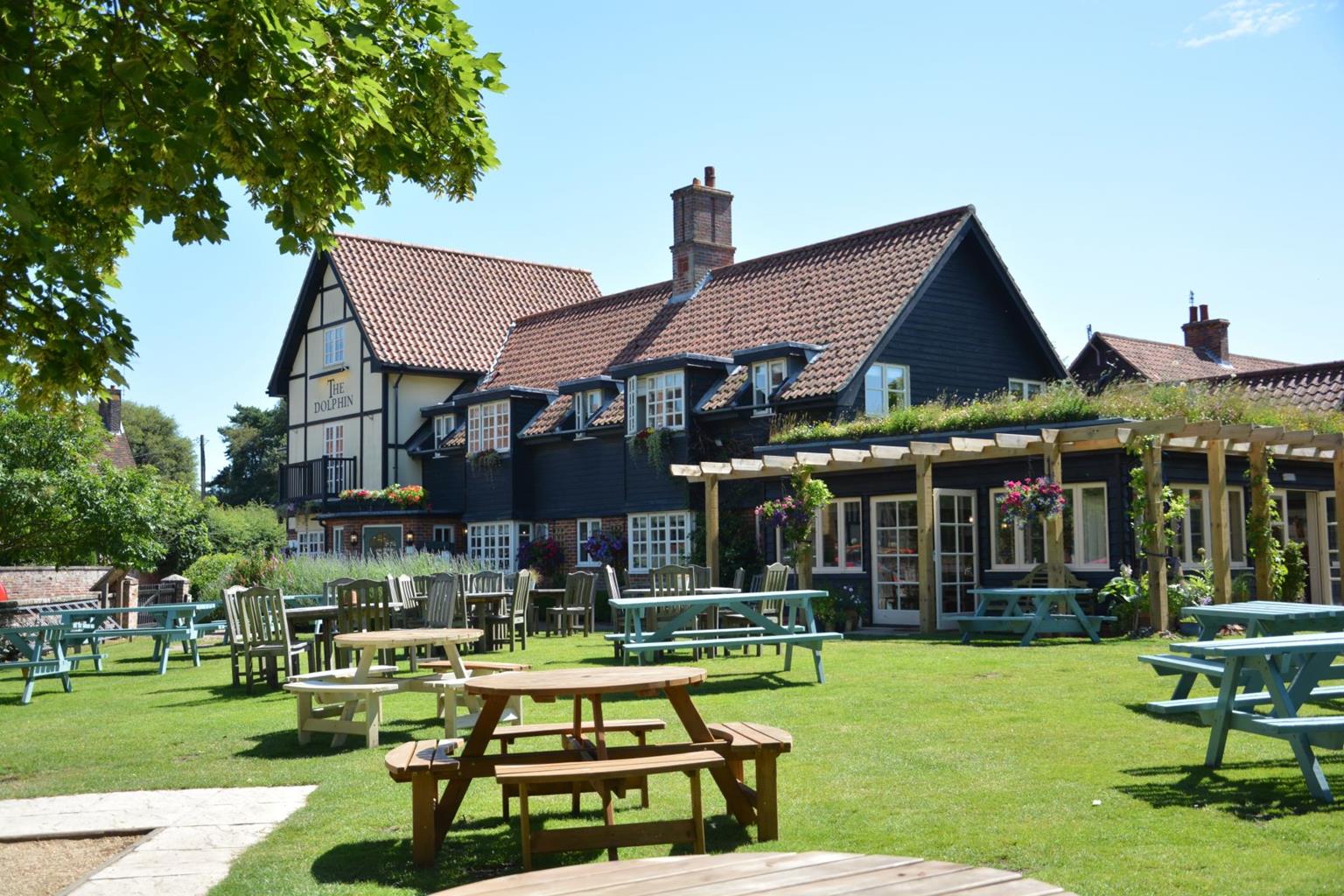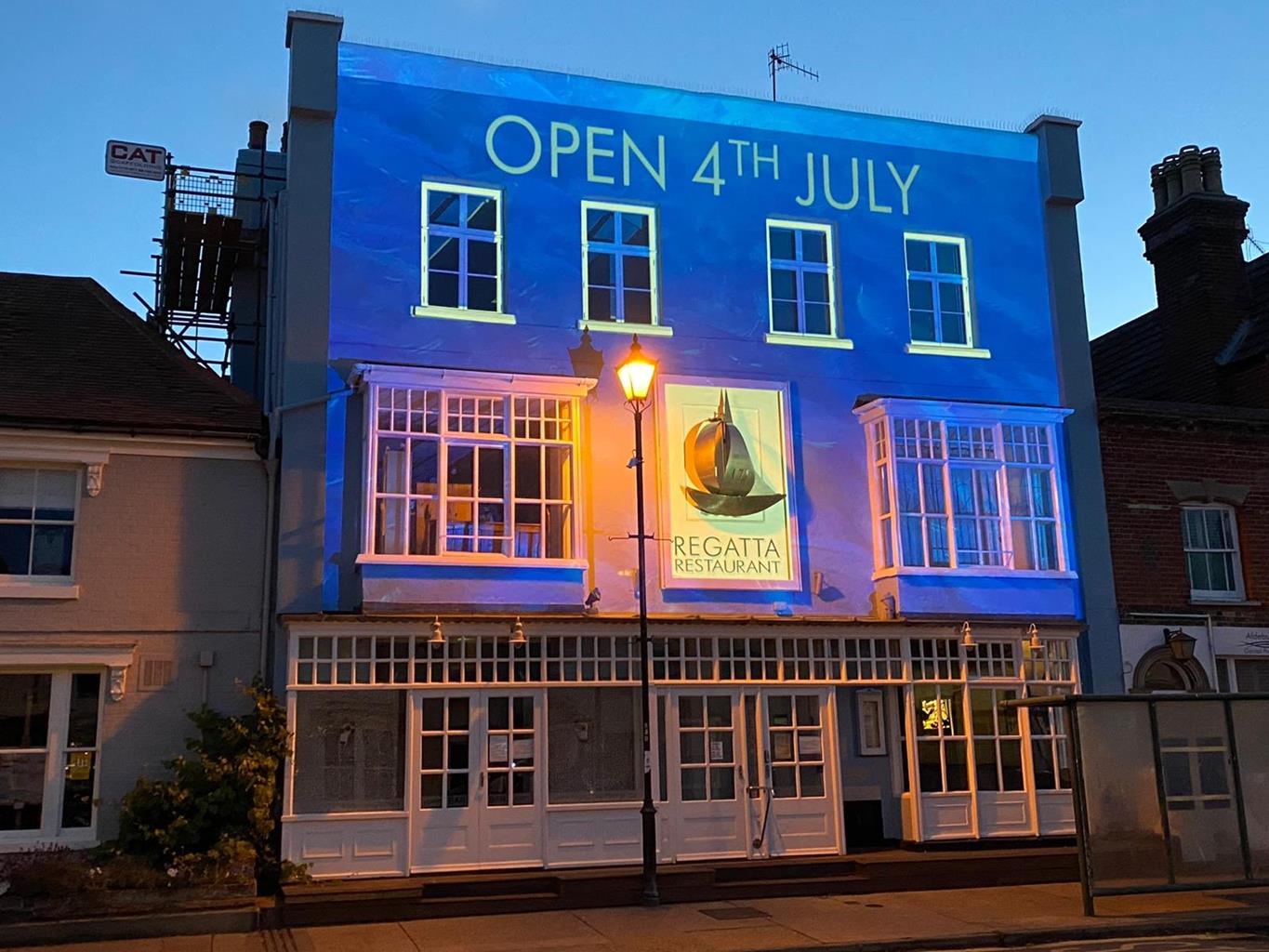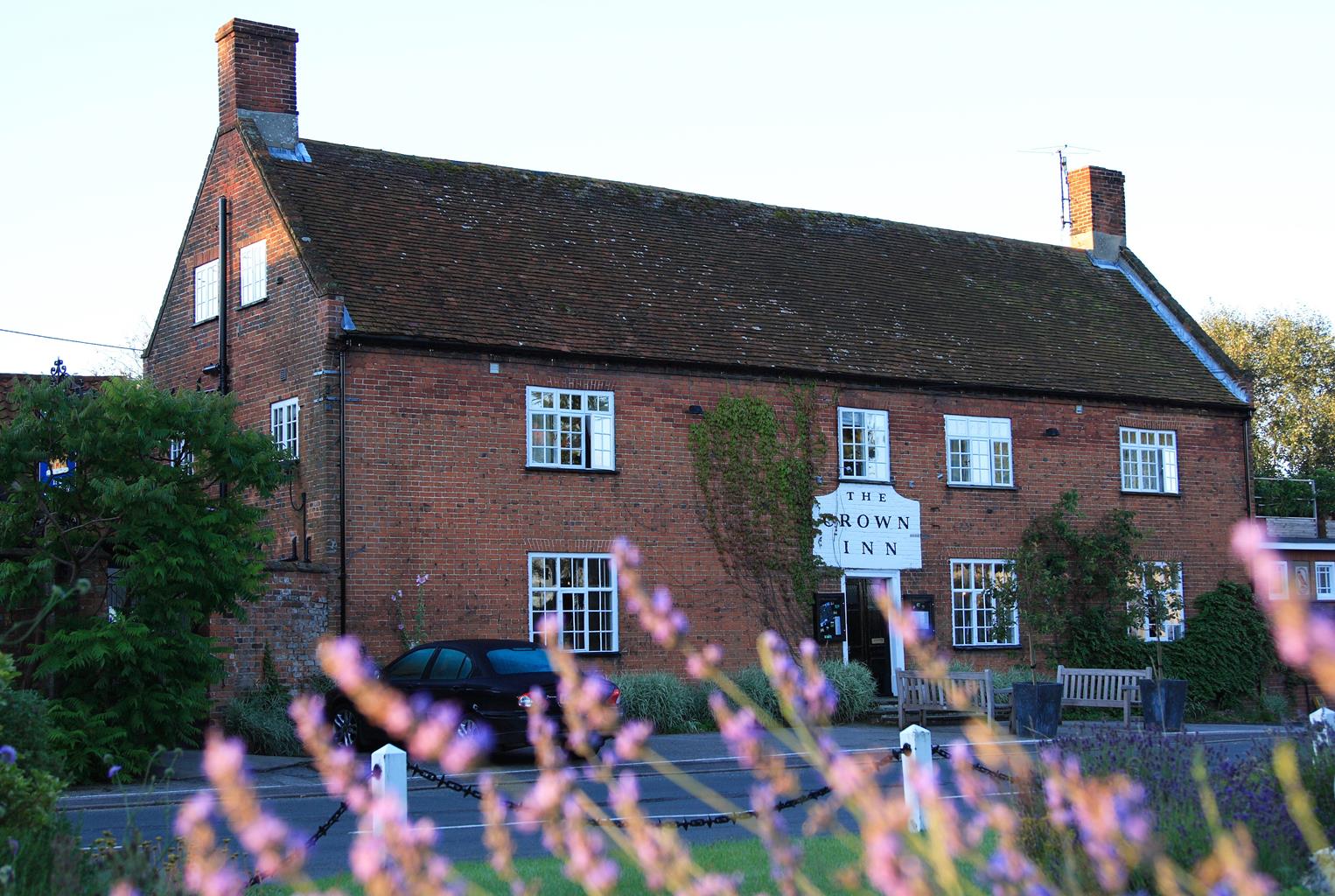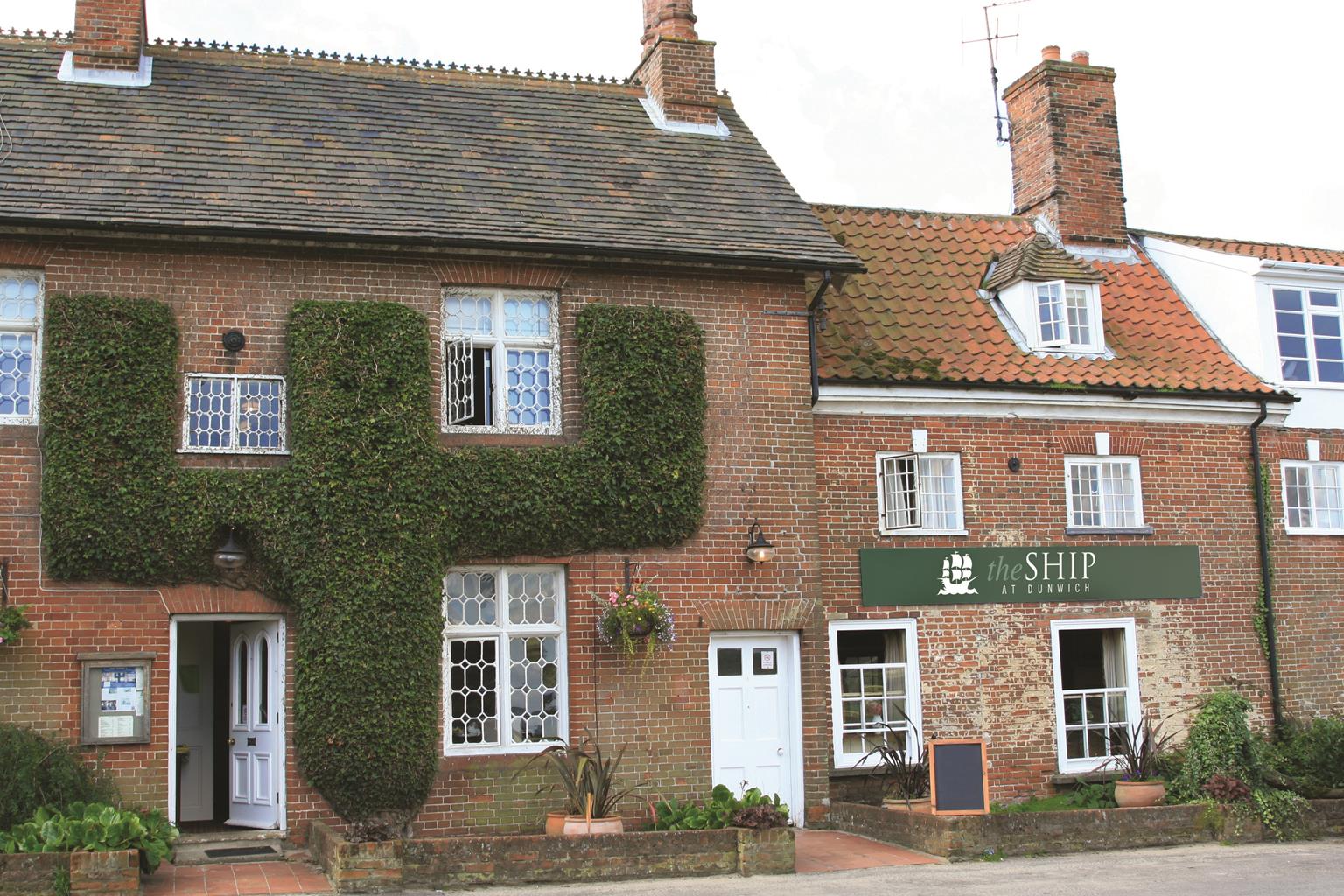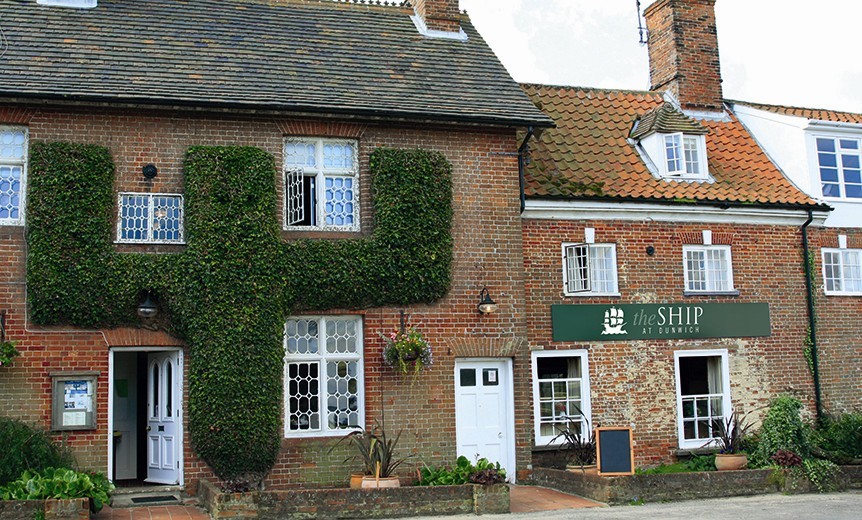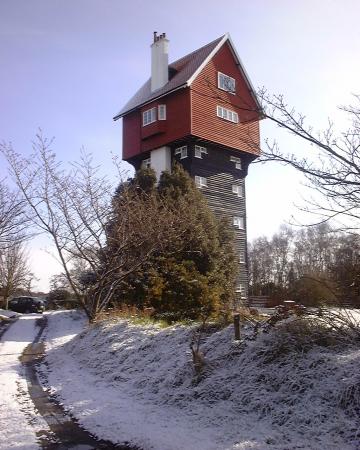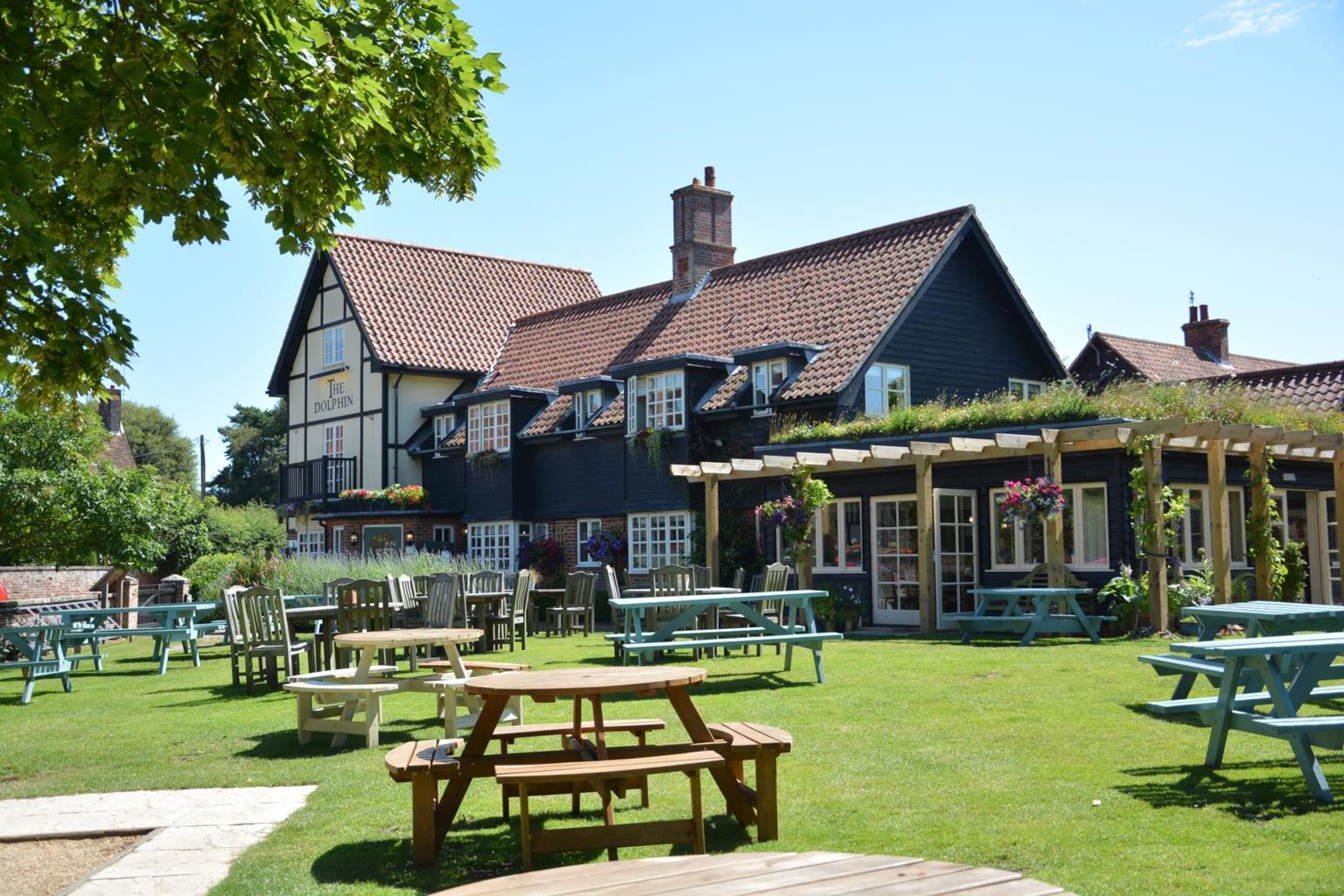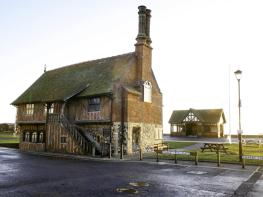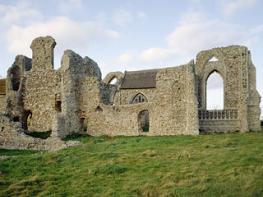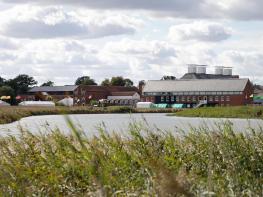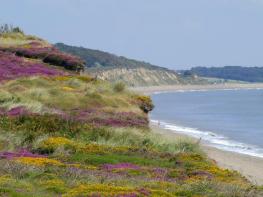Thorpeness was the vision of Glencairn Stuart Ogilvie, who built it in the 1920s. One of its…
Thorpeness and The Meare

A stroll around the fairy-tale holiday village built by G. Stuart Ogilvie a hundred years ago.
4.5 miles (6.4kms)
About the walk
A hundred years ago, neither the village nor the lake at Thorpeness existed in anything like its present form. As Graeme Kemp, in his 1925 book Concerning Thorpeness, notes: ‘What was an expanse of dreary and sunburnt clay flats has been transformed, by the Imagination and Arts of Man, into a romantic Lake with wide stretches of open water, peculiarly adapted for sailing purposes, from which winding channels have been cut through acres of towering reeds, often taller than a man’s full height, to secret backwaters and silent eyots overhung and hidden by the foliage of innumerable trees.’
The man with the plan
The gentleman responsible for this transformation was the playwright G. Stuart Ogilvie. He inherited his family’s fortune in 1908, which included a 6,000-acre estate and seven miles of coastline. His dream was to create an entire village with a lake on which children could take to the water in complete safety (the Meare, though covering 62 acres, is never deeper than 75cm). Calling it his ‘model holiday village’, it would be a place where the members of the upper-middle classes who wanted to get away from city life could buy themselves a little bolt hole.
The Meare
A crucial piece in the creation of the perfect holiday village was the mere. Sluice gates were built, banks were strengthened, the sporadically flooding River Hundred diverted, the soggy mere (at that time spelt without that peculiar extra ‘a’) was drained. The water took three whole weeks to leave – the summer’s sunburnt clay becoming a ghastly soggy mess. Sixteen fishermen and various other local men were then employed to dig out the mere and move the sludge to create islands. Ogilvie then had thousands of trees – mainly willow and alder – planted on the islands. Inspired by a local find of a hoarde of Roman coins, he had the idea that children visiting his mere should enjoy the fun of a treasure hunt themselves. He thus built a pirate’s lair on one island, a smugglers’ cave on another, and asked his friend J M Barrie if he could borrow some of the characters from Peter Pan which is how Wendy’s House and Peter Pan’s Property came into existence. In 1912, with the Meare taking shape, the country was scoured for secondhand rowing boats, sailing dinghies, canoes, punts and anything else that would float and could be hired out.
The Meare was an instant and overwhelming success. In 1925 Kemp wrote, ‘70 rowing and sailing boats, Thames punts, canoes and motor launches often proves all too small for the public request.’ A hundred years on, the Meare is not all that different from the one portrayed in early photographs and it’s easy to imagine you have time-travelled to a distant, far more innocent age. The village, meanwhile, is an interesting mixture of building styles, with the grand West Gate dominating the skyline.
Walk directions
From the car park, cross the road and turn right. On your left is the Meare Shop and Tea Room and the lake where you can hire a rowing boat in summer. Turn left alongside The Meare and take the second left, Uplands Road. Stay on this track as it climbs past a windmill on the left and the House in the Clouds to the right. At a golf course, keep straight ahead between hedgerows and follow this path across the course, keeping the waterways of The Meare to your left.
Turn right just before Mere Cottage and stay on this path to a maintenance area, where you turn left on a gravel track to meet the main road. Cross the road and keep straight ahead, following the line of a disused railway. When the main track bends right, keep straight ahead, following a Sandlings Walk waymark, and go through a gate to enter a conservation area (Aldringham Walks) on a narrow path climbing through the bracken.
When you reach another gate, go through and fork right at a junction of paths with Sizewell B visible up ahead. Stay on this track between farmland to the left and heathland to the right. Keep straight ahead at a crossroads of paths, and again when crossing a dirt track. The path now becomes a wide dirt track passing between hedges.
At a road, turn right and then left before the entrance gates to Sizewell Hall. Keep to the left of the campsite and turn right along the clifftop path. Stay on this path for 1.4 miles (2.3km), passing through a tunnel beneath the staircase leading to Sizewell Hall, now a Christian conference centre. Stay on the clifftop path as it drops slowly down towards the beach to run behind the shingle. When the path eventually runs out, turn right up the cliff, and turn left along the clifftop paths to reach a gravel road by The Red House. Follow the road round to the right. When you see the sign for the Dolphin pub ahead, turn left on to a track, passing the Thorpeness Country Club and its lawn tennis courts to emerge opposite The Meare with the starting point just beyond to the left.
Additional information
Lanes, disused railway, footpaths, beach
Lake, village, woods, fields, sea
On lead in village and by lake
OS Explorer 212 Woodbridge & Saxmundham
Remembrance Road, Thorpeness (free)
At the Meare near the tea room
WALKING IN SAFETY
Read our tips to look after yourself and the environment when following this walk.
Find out more
Also in the area
About the area
Discover Suffolk
Suffolk is Constable country, where the county’s crumbling, time-ravaged coastline spreads itself under wide skies to convey a wonderful sense of remoteness and solitude. Highly evocative and atmospheric, this is where rivers wind lazily to the sea and notorious 18th-century smugglers hid from the excise men. John Constable immortalised these expansive flatlands in his paintings in the 18th century, and his artwork raises the region’s profile to this day.
Walking is one of Suffolk’s most popular recreational activities. It may be flat but the county has much to discover on foot – not least the isolated Heritage Coast, which can be accessed via the Suffolk Coast Path. Southwold, with its distinctive, white-walled lighthouse standing sentinel above the town and its colourful beach huts and attractive pier features on many a promotional brochure. Much of Suffolk’s coastal heathland is protected as a designated Area of Outstanding Natural Beauty and shelters several rare creatures including the adder, the heath butterfly and the nightjar. In addition to walking, there is a good choice of cycling routes but for something less demanding, visit some of Suffolk’s charming old towns, with streets of handsome, period buildings and picturesque, timber-framed houses.
Nearby stays
Restaurants and Pubs
Nearby experiences
Recommended things to do
Why choose Rated Trips?
Your trusted guide to rated places across the UK
The best coverage
Discover more than 15,000 professionally rated places to stay, eat and visit from across the UK and Ireland.
Quality assured
Choose a place to stay safe in the knowledge that it has been expertly assessed by trained assessors.
Plan your next trip
Search by location or the type of place you're visiting to find your next ideal holiday experience.
Travel inspiration
Read our articles, city guides and recommended things to do for inspiration. We're here to help you explore the UK.

